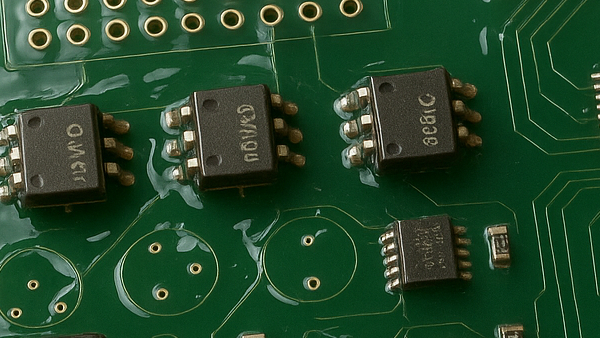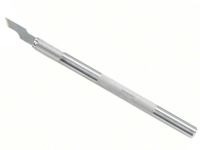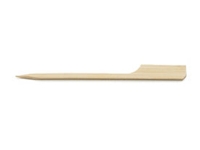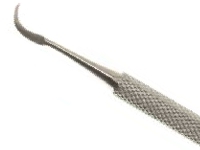|
Outline
This peeling removal method for coatings can be used only under special circumstances. It is commonly used to remove RTV silicone or other thick, rubbery-like coating materials. The coating material is removed using a dull knife or other dull blade to slit it and peel it off the printed board or printed board assembly. The coating must first be identified to determine the appropriate coating removal procedure. Refer to procedure number 2.3.1.
|
||||||||||||||||||||||||||||||||||
|
Procedure
Evaluation
|
||||||||||||||||||||||||||||||||||
Images and Figures
Coating Removal, Peeling Method

Figure 1. The area requiring coating removal is identified.

Figure 2. Slit and peel off the coating material with a dull knife or heated dull blade.

Figure 3. Repeat as needed until the required material is removed.
|
||||||||||||||||||||||||||||||||||
2.3.3 Coating Removal, Peeling Method
Procedure covers the methods for removal of thick coatings on circuit board assemblies using a peeling method.
Minimum Skill Level: Advanced
Conformance Level: High
REQUEST FOR QUOTE GUIDES INDEX

Coating Removal, Peeling Method

The area requiring coating removal is identified.

Slit and peel off the coating material with a dull knife or heated dull blade.

Repeat as needed until the required material is removed.

This versatile tool is ideal for milling, drilling, grinding, cutting, and sanding circuit boards.
LEARN MORE

This versatile tool is ideal for milling, drilling, grinding, cutting, and sanding circuit boards.
LEARN MORE

We're here to help with coating removal/replacement and other challenging circuit board rework and repair needs.
LEARN MORE
SLIDESHOW STARTING
❮
❯










